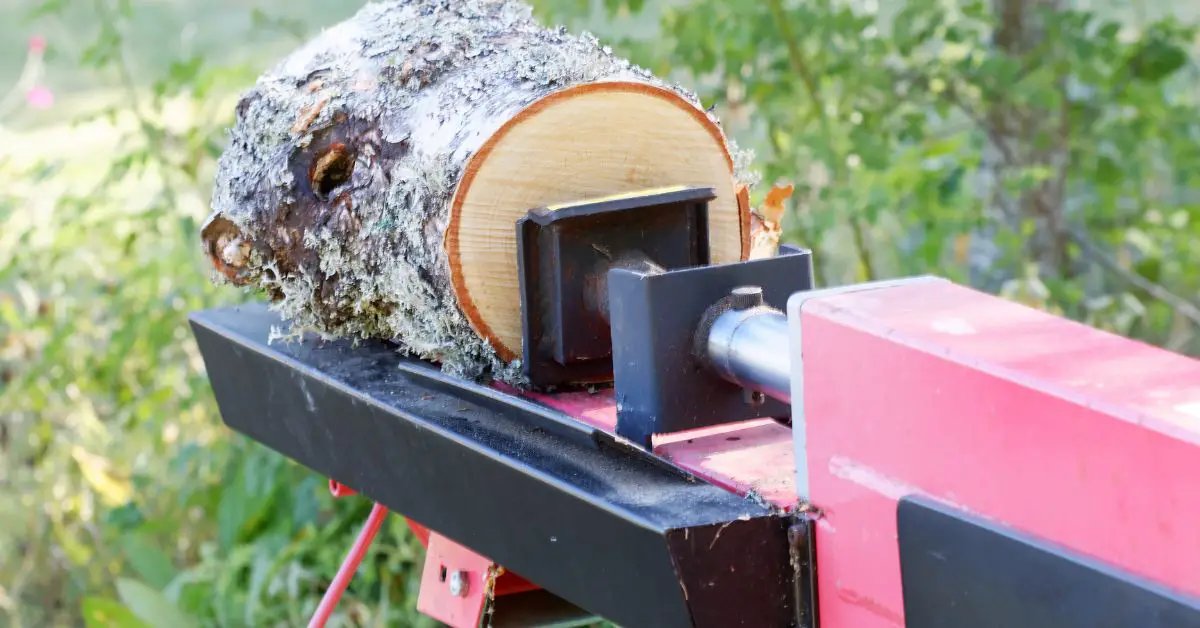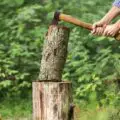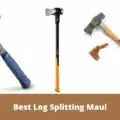Log Splitting
Best Log Splitting Tools
BEST LOG SPLITTING TOOLS
Whether you are looking to improve your site's performance or want to split firewood for your fireplace, there are plenty of reasons to use a log splitting tool. Log splitting tools are being used more and more. They come in handy in cutting wood, regardless of size, thus easing your burden.
But it's hard to pick a single one which is why I've reviewed the five types of log splitting tools and when to use each. Continue reading to find out more!
Splitting Axes
A splitting axe is a tool used to split wood into smaller pieces by striking it with an axe head. Splitting axes have been around for centuries but have changed significantly over time. There are many different types of splitting axes available on the market today, each with unique features and benefits.
The first type of splitting axe was made of steel or iron and was very heavy because it had to be strong enough to resist the force of the swing from the user's arm when he hit the log with his axe head. This splitting axe was known as "primitive" or "simple." It was also known as a "manual" splitting axe because all you needed was strength and leverage to use it effectively.
The second type of splitting axe was made of softer metals like copper or bronze, which made them lighter than steel or iron ones and easier to operate for those who were not strong enough to wield the heavier metal ones.
Splitting axes are also known as broadaxes or tomahawks and are designed for splitting logs into firewood and lumber for construction purposes.
OSHA does not authorize them for use in commercial situations as they do not provide adequate protection against injury during use due to their design features. However, they can be used safely if handled properly by someone who knows how to use them correctly.
When to use
You can split all your firewood using a splitting axe. They are typically durable, affordable, and effective. Besides, using a splitting axe to cut firewood is an excellent exercise. Hence, this is the way to go if you have a small pile of firewood requiring splitting, this is the way to go!
Splitting Maul
A splitting maul is a tool used to split heavier logs and firewood. You can use the maul to split logs into smaller pieces, which then can be stacked or used as kindling. A splitting maul also can be used to split up firewood into smaller pieces, which then can be stacked or burned on a wood stove.
They are often used by individuals who are trying to save money on their heating bills but also can use their wood for fuel. They may also want to get rid of the old woodpile or splintery logs in their yard or home.
When to use
Splitting Mauls are great when you need something to help you split the heavier chunks of wood into smaller pieces for your fireplace.
It's also great if you have old logs too big for your fireplace but not small enough for a sawmill (like oak trees). A splitting maul will help you cut these big pieces of wood into more manageable sizes before burning them in your fireplace.
Splitting Wedge
The splitting wedge is a type of wedge that is used to split rocks or other hard materials into smaller pieces. It typically has a handle at each end, with a blade extending through the handle's centre. The blade is sharpened on both sides, and you can use it to cut through any material that does not have much resistance to cutting.
The handle of the splitting wedge is made from steel or iron and is used to hold the log in place while it’s being split. The top of the handle is squared off so that it fits nicely into your hand, providing you with extra leverage as you use it to split logs.
The axe head of the splitting wedge consists of two parts: an anvil at one end and a blade at the other. When you hit these two parts simultaneously, they form an impact point on which you can strike your log with your splitting wedge.
You should always wear safety glasses when using this type of tool because it can cause eye injuries if you are not careful. You should also wear gloves when handling one side of the blade because they protect your hands from any cuts or scrapes that might occur while working.
When to use
The most common use for a splitting wedge is to split rocks into smaller pieces for use in construction or landscaping projects. This tool may also be used by people who want to break up large slabs of concrete or asphalt to create small pieces of usable material.
You can also use the splitting wedge during excavation work if you need to break up large amounts of dirt and debris before adding them back into your new project area.
Log Splitter
A log splitter is a machine that slashes logs into pieces for easy transport. It's designed to get logs out of the way rather than converting them into fuel.
There are two types of log splitters: horizontal and vertical splitters. The horizontal type is easier to use than the vertical type because it does not require you to stand on a ladder to operate it. The horizontal splitter can be used on residential and commercial properties with minimal maintenance requirements.
The vertical type requires more advanced knowledge and skill compared to its horizontal counterpart, but it can still be very effective at splitting large logs into smaller ones with ease. If you have plenty of space available, then this may be the best choice for you since it's larger than most other horizontal splitters on the market today.
If you want to use a portable log splitter in your home, look for one with an electric starter so you can start it without relying on gasoline or diesel fuel for power. Most models also come with hydraulic pumps that allow the operator to manually raise and lower the cutting head using levers on both sides of the machine.
When to use
The main purpose of a log splitter is to create firewood and/or lumber from large logs that cannot be cut with an axe. A log splitter functions by moving the blade back and forth through the log, which causes it to split in two halves or thirds.
Depending on the log size and how many times you have used your log splitter, this can take several days or even weeks. Splitting wood with a log splitter takes much less time and is safe.
Hatchet
If you're not sure what a hatchet is, it's a tool that looks like a heavy maul but with a shorter handle. It's used for chopping and splitting wood and other materials like stone.
Hatchets come in various sizes, depending on the job they're designed to do. For example, an 8-inch hatchet can be used to split logs, while an 18-inch hatchet can cut through larger logs and tree branches.
Smaller hatchets are better for splitting wood, while larger ones are better for chopping or cutting down large trees with one blade swing.
However, there's one thing to keep in mind when using a hatchet:
Always wear eye protection when using your hatchet outdoors! The blade can fly off at any moment if you're not careful with your swing or if you hit something solid too hard. Small splinters from the wood or chips from the lumber will also fly off your eyes if you don't have the proper protection in place.
When to use
A hatchet can be used to fell or split trees, including conifers. Hatchets are either single-beveled (single-bit) or double-beveled (double-bit). Double-beveled hatchets have a second cutting edge on the blade's backside, allowing them to be used for splitting logs into firewood.
Hatchets with spinal blades are used for clearing brush and bush when camping. This type of hatchet has been popular for centuries because it is extremely versatile. It can be used for many outdoor tasks, such as chopping and kindling branches off trees for campfire cooking.
Why You Should Trust Us
At Woodworking Tool Guide, we know one size doesn't fit all! We cater to every woodworker, from beginner to pro, with insights and recommendations tailored to your skill level, project needs, and budget. We take the guesswork out of choosing the right tools, whether you're tackling your first crafting a masterpiece for the ages. So grab your chisel, join our community, and let's build something amazing together!
Woodworking Tool Guide wasn't just born, it sprouted from a seed of passion for the craft. What started as a joyful exploration blossomed into a trusted online haven for fellow enthusiasts like you. We pour our love into meticulously chosen review selections, meticulous hands-on testing, and lab-backed insights, all to empower you with reliable, comprehensive information you can build on. So, grab your tools, trust our guidance, and let's build something beautiful together!
Passion-Driven Expertise
Our journey started with a shared love for woodworking. The team behind the Woodworking Tool Guide is comprised of individuals who are not just writers but passionate woodworkers themselves. This shared enthusiasm ensures that our content is crafted with a deep understanding of the craft and an authentic appreciation for quality tools.
Top Tool Guides Online
Woodworking Tool Guide has rapidly ascended to become one of the premier online destinations for tool guidance. Our commitment to excellence and the accuracy of our information has positioned us as a reliable source for both beginners and seasoned woodworkers seeking trustworthy advice on the best tools for their projects.
User-Centric Approach
Our content caters to every woodworker, from rookies just starting out to seasoned pros tackling intricate projects. We tailor our insights and recommendations to your skill level, project needs, and budget, ensuring you find the perfect tools to match your unique woodworking journey. So step into your workshop, grab your tool belt, and let Woodworking Tool Guide be your trusted companion as you craft your masterpieces.
Continuous Support and Innovation
Woodworking is an ever-evolving craft, and so is our commitment to supporting you. We are dedicated to bringing you the latest information on woodworking tools, techniques, and trends. Our team is actively working to expand our content and bring you more valuable insights, ensuring that you stay well-informed in your woodworking adventure.
Hands-On Experience
Ditch the endless research rabbit hole! At Woodworking Tool Guide, we believe in actionable advice, not armchair analysis. We get our hands dirty, putting every tool through its paces in real-world woodworking scenarios. Whether it's the precision of a table saw, the versatility of a router, or the tactile satisfaction of a handplane, we test for performance, durability, and user-friendliness. No more sifting through dry specs – we deliver practical insights you can trust to transform your woodworking dreams into reality.
Woodworking Tool Guide isn't just a review site, it's your trusted companion on the sawdust-filled path to woodworking mastery. Our expert team, led by veteran David Jones, meticulously tests and explains tools in terms you understand. We cut through the jargon, bias, and confusion with real-world insights and honest evaluations. Join our passionate community, where decades of experience, cutting-edge knowledge, and shared love for the craft come together to guide you every step of the way. So grab your chisel, buckle up, and let's embark on this exciting woodworking adventure, together!
Conclusion
So now, which of these five tools will you go with? They each have amazing qualities, and none of them was a showstopper. They don't cost an arm and a leg but do a quality job. We all like different features, so there is no one-size-fits-all answer. My favorite is the Maul, as it's easy to use, lightweight and durable. If I had to pick just one log splitting tool to keep in my garage, this would be the one I would choose.









